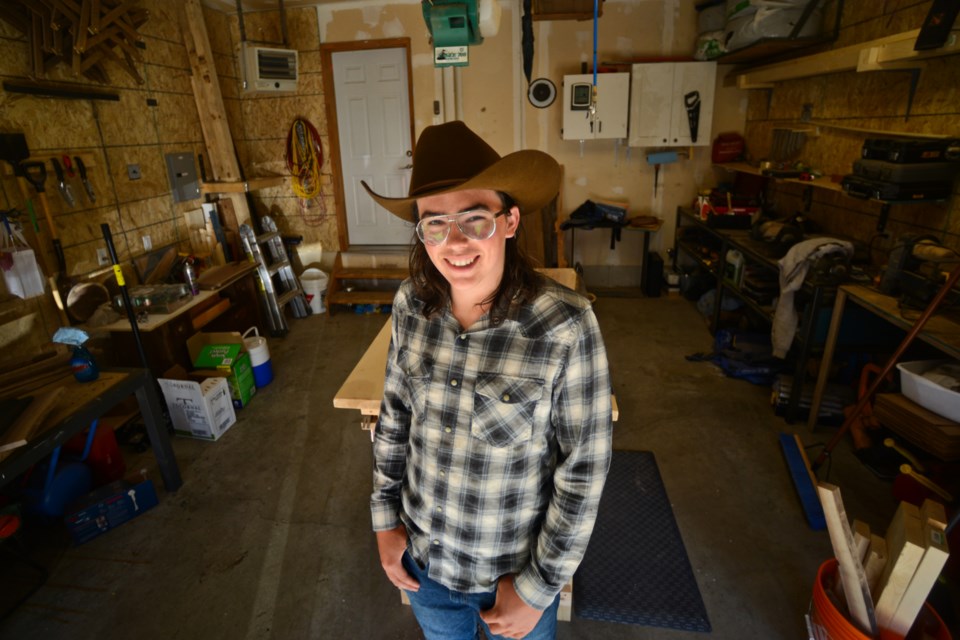James Russell has done something few teenagers are able to do at the best of times, never mind during a pandemic.
The 17-year-old Russell has turned a passion for woodworking into a business, Sawdust and Steel Woodworking, spending hours in his homemade shop at his family’s east Guelph home making one-of-a-kind charcuterie boards, cutting boards and tables.
From simple but beautiful charcuterie boards to more extravagant pieces that combine patterned pieces of a variety of woods with coloured epoxy, Russell’s pieces look as much art as craft.
Russell got serious about woodworking a couple of years ago around the holiday break.
“I needed something to do over Christmas break and my mom wanted a coffee table, so I went and got myself a piece of wood and mader her one. It all sparked from that,” Russell said.
After that the biggest push has been working at Legacy Lumber and Canadian Woodworks between Guelph and Erin. Russell saw their work at a woodworking show so went and applied for a job. He’s worked there part time ever since.
“I knew what it was all about, but I didn’t know all the little things that go into it. Taking it to that next level.”
Prices range from $60 for a charcuterie board to a $1,000 for a gorgeous epoxy and wood side table.
Ash, walnut, oak, spalted maple and a host of other woods, each with its own characteristics and pattern, are used for the finished product. Everything from the wind to beetles can add a beautiful pattern to the wood.
“Wood is a very interesting thing,” Russell said.
He’s been adding tools and other equipment to his garage shop. Adding in size and quality.
Russell was supposed to have a 10-day stint at the Guelph Farmers’ Market before COVID-19 hit.
“All of the lumber is locally salvaged. It comes out of trees in people’s backyards,” he said.
The wood is dried before being worked with in a radio-frequency vacuum kiln.
“It takes anywhere from three days to three weeks,” he said. A more traditional kiln can take up to two months to completely remove the moisture from the wood.
Russell said working with wood is a continual learning process.
“With every pour and every different piece I do, there’s always something new to be learned,” he said.
“Lots of mishaps and bumps along the way. You learn from it.”
Russell’s Facebook page can be found here.
